Home  Sail Transport Network Sail Transport Network
|
Make a Donation to STN
Contact
Jan Lundberg
This e-mail address is being protected from spam bots, you need JavaScript enabled to view it
SailTransportNetwork.org
(215) 243-3144
P.O. Box 3387
Santa Cruz, CA 95063 USA
|
|
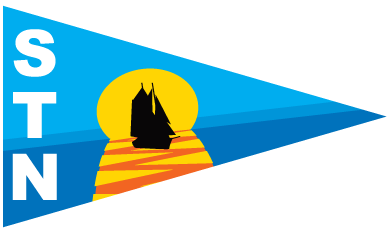
Welcome to the Sail Transport Network! The MAIN WEBSITE IS NOW www.SailTransportNetwork.com
Are the days of tall ships really over?
From prehistory until about 1865 ships were hand built, usually of wood, and sailed by brave folk. They plied the waters of the globe and were responsible for the discovery of (or contact with) foreign lands, a fact which we take for granted today. Trade agreements were reached between nations on the quarterdecks of grand "tall ships" of more than two masts, and wars were fought from their decks to protect or destroy those trade agreements.
Fishing on a major scale was first done by sail, and passenger transport was by sail as it was for shipping food, building materials, precious metals and stone, commodities, and mail... all done with the power of the wind. Crews operated in relative harmony with each other and the elements out of necessity.
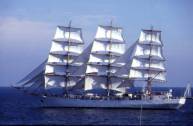 By 1865, steam power was taking its toll on the sailing industry, and by 1920, the internal combustion engine had all but replaced the great sailing ships. The last cargo delivered by sail was on 29 August 1957, aboard the three masted schooner Elian out of Wales. Her cargo was coal. There were very few transoceanic schooner cargo shipments between 1938 and 1957; twelve, to be exact. The last three schooners delivering cargo on the high seas were the Elian, Edna Hoyt (also a Welsh ship), and the Grace Bailey from the United States, and there were no sail-freight shipping firms after 1938, and all ships were privateers. Steam and internal combustion rang the death knell for the first golden age of sail.
This low note in history, this loss of an unmatched, good, efficient form of transport, surpasses perhaps the momentous passing of the brief reign of the marvelous but more technological bicycle. When we consider the loss of sailing capacity, it has not received the attention that the electric rail trolley system's demise in the U.S. has received. The latter was caused by a criminal conspiracy between General Motors, Standard Oil of California, and other corporations, to buy up several dozen urban rail companies. The plan carried out was to rip out the tracks and install oil-burning buses. The several dozen U.S. cities that lost their rail systems never quite recovered. Similarly, the U.S. has lost a lot by giving up on sailing ships that relied on what was the renewable but non-limitless resource of tall trees.
By 1865, steam power was taking its toll on the sailing industry, and by 1920, the internal combustion engine had all but replaced the great sailing ships. The last cargo delivered by sail was on 29 August 1957, aboard the three masted schooner Elian out of Wales. Her cargo was coal. There were very few transoceanic schooner cargo shipments between 1938 and 1957; twelve, to be exact. The last three schooners delivering cargo on the high seas were the Elian, Edna Hoyt (also a Welsh ship), and the Grace Bailey from the United States, and there were no sail-freight shipping firms after 1938, and all ships were privateers. Steam and internal combustion rang the death knell for the first golden age of sail.
This low note in history, this loss of an unmatched, good, efficient form of transport, surpasses perhaps the momentous passing of the brief reign of the marvelous but more technological bicycle. When we consider the loss of sailing capacity, it has not received the attention that the electric rail trolley system's demise in the U.S. has received. The latter was caused by a criminal conspiracy between General Motors, Standard Oil of California, and other corporations, to buy up several dozen urban rail companies. The plan carried out was to rip out the tracks and install oil-burning buses. The several dozen U.S. cities that lost their rail systems never quite recovered. Similarly, the U.S. has lost a lot by giving up on sailing ships that relied on what was the renewable but non-limitless resource of tall trees.
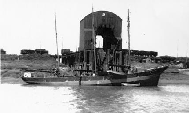 Schooner Elian on 29 August, 1957 RENEWABLE ENERGY = SUSTAINABLE TRADE!
Sail Transport Network is a movement. For thousands of years, wind energy moved people and goods all over the world without pollution. Today, dwindling, geopolitically sensitive oil is used for every form of transportation and commerce. Even e-commerce with computers is dependent on forms of petroleum, and trucks and cars clog roads to a deathly degree.
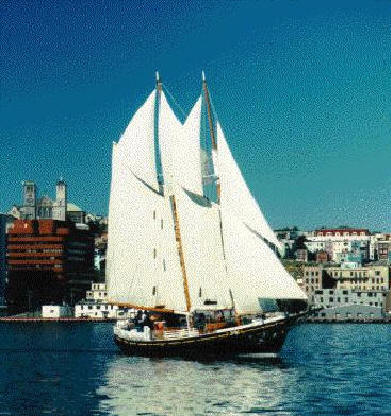 The Wanderer in her earlier days 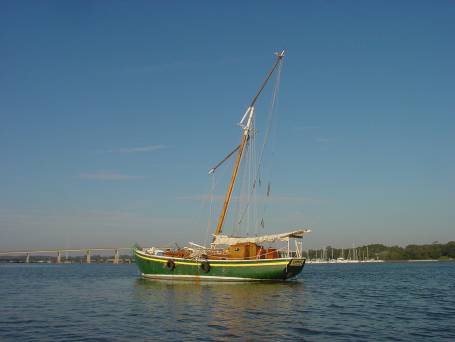 The Wanderer in Dec. 2006 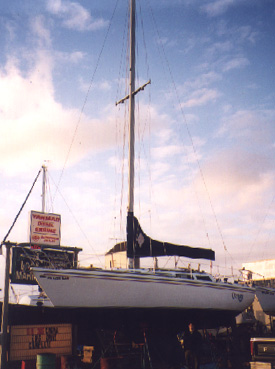 The Odyssey, hauled out in Everett, WA 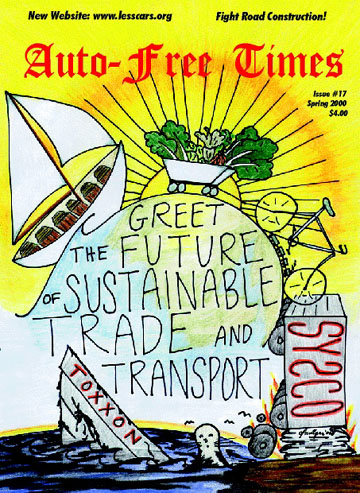 Art by Juniper Elk (Erika L. Kraft), 2000, Arcata |
|
|
|

